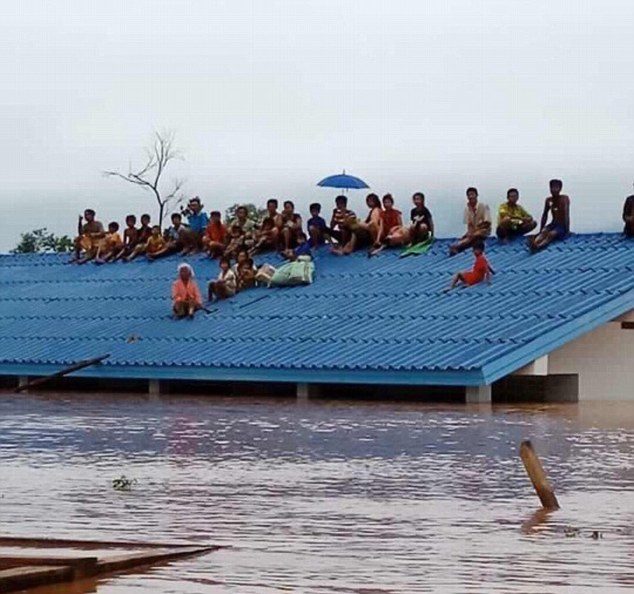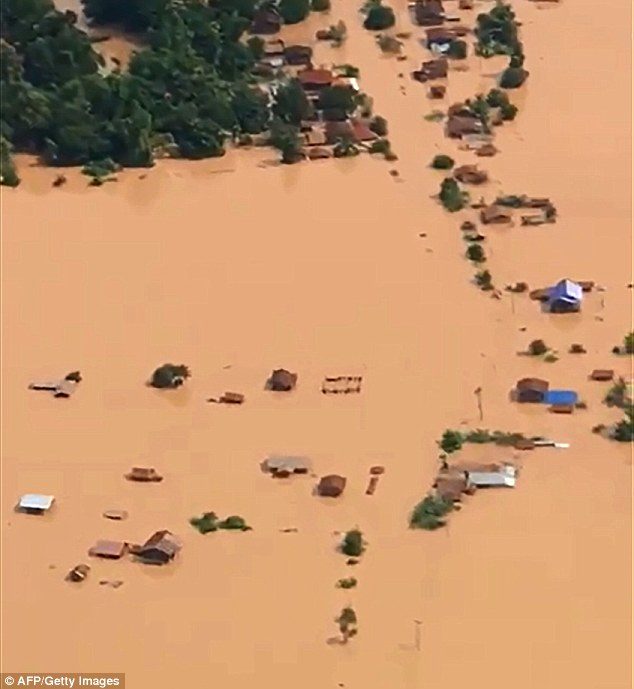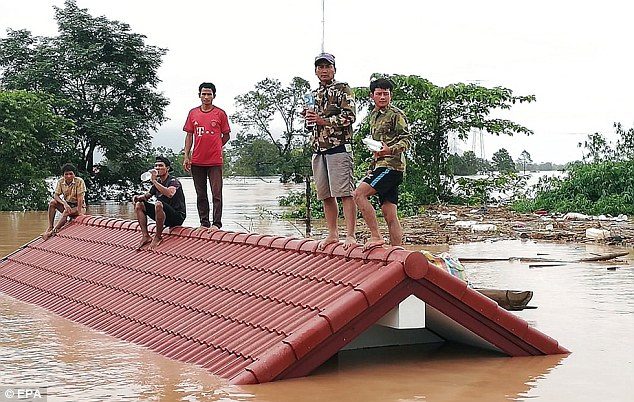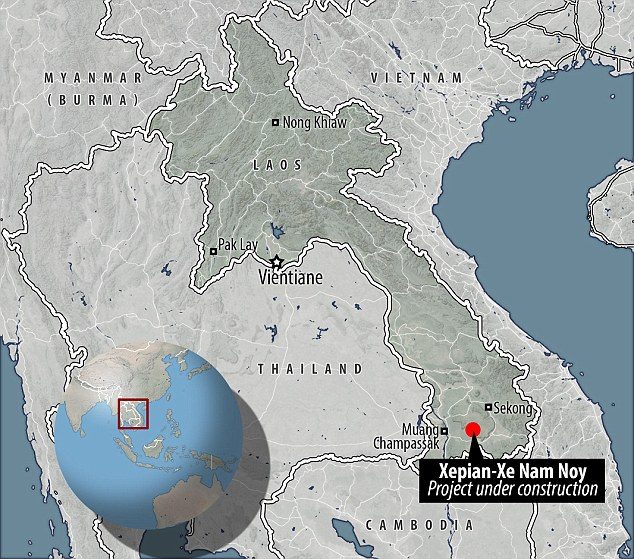
The accident happened at the Xepian-Xe Nam Noy hydropower dam in the southeastern province of Attapeu on Monday, sparking flash floods in villages in the area and leaving more than 6,000 people homeless.
The dam, which was still under construction, released five billion cubic metres of water, which is equivalent to over two million Olympic swimming pools.
It is not yet known what caused the collapse.
Laos News Agency said: 'Several human lives claimed, and several hundreds of people missing.'
'We do not have any formal information yet about any casualties or how many are missing,' an Attapeu official told AFP on condition of anonymity, adding that there was 'no phone signal' in the flooded region.
'We sent rescue teams who will help them and provide basic assistance first,' the official added.
Six villages in the Sanamxay district experienced flash floods, including Yai Thae, Hinlad, Mai, Thasengchan, Tha Hin, and Samong. Hinlad and Mai villages were hard-hit.


Prime Minister Thongloun Sisoulith suspended the planned monthly meeting of the government and instead led his cabinet and other officials to the affected areas to monitor the situation and the rescue effort.
Communist Laos is traversed by a vast network of rivers and there are several dams being built or are planned in the impoverished and landlocked country, which exports most of its hydropower energy to neighbouring countries like Thailand.

Among the companies involved in the project according to the Laos News Agency are Thailand's Ratchaburi Electricity Generating Holding, South Korea's Korea Western Power and the state-run Lao Holding State Enterprise.
The 410 megawatt capacity dam was supposed to start commercial operations by 2019, according to the venture's website.
The project consists of a series of dams over the Houay Makchanh, the Xe-Namnoy and the Xe-Pian rivers in neighbouring Champasack Province.
It planned to export 90 percent of its electricity to energy hungry Thailand and the remaining amount was to be offered up on the local grid.
Under the terms of construction, PNPC said it would operate and manage the power project for 27-years after commercial operations began.
When contacted by phone in Laos' capital Vientiane an official told AFP: 'We do not have any official reports about it yet. We are gathering information.'
Dam projects, mainly providing power to neighbouring countries, have long been controversial as they often displace large numbers of local people.
Communist authorities in Laos keep tight control information and is often opaque about business deals and development projects.
The country has around 10 dams in operation, 10 to 20 under construction, and dozens more in planning stages.
For example, the hydroelectric project at Xayaburi, led by Thai group CH Karnchang, with a 1,285 megawatt dam - which will cost $3.5 billion according to state media - is at the heart of Laos' plan to become 'the battery of Southeast Asia'.
But it has sharply divided several Mekong nations who worry it will disrupt vital ecosystems and their own river systems.
'Once they cast themselves as the battery of Asia, exporting electricity became one of the major revenue sources, so it's basically selling natural resources such as water,' Toshiyuki Doi, Senior Advisor at Mekong Watch, told AFP, adding he was not aware of a dam collapse.
Occasionally reports of accidents do emerge.
Six Vietnamese workers were killed when a gas cylinder exploded at the construction site of a hydropower plant in central Laos in July last year.



Reader Comments
to our Newsletter